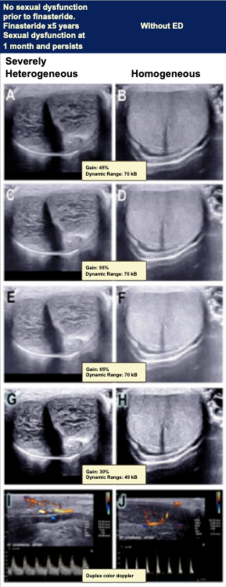Vascular, Neurologic and Hormonal Abnormalities in Men with Persistent Sexual Dysfunction After Discontinuation of Finasteride
Carlisle et al., 2022
““In a large series, we replicated Khera’s findings of persistent physical sequelae associated with changes in sexual function in men after [discontinuation of finasteride]. While more research is needed, this population is young, ED is most often severe, and testing shows a high prevalence of vascular, neurologic and hormonal pathologies.””
Expanding upon a previous study by Khera et al. that demonstrated vascular abnormalities upon penile duplex doppler ultrasound examination of PFS patients, Carlisle et al. clinically reviewed and assessed a significantly larger cohort of 96 patients who were suffering with persistent sexual dysfunction after discontinuation of finasteride.
Exclusion criteria included any pre-existing sexual dysfunction or concomitant SSRI use. Patients experienced deleterious changes in sexual function within 6 months of discontinuation that had persisted for a minimum of six months.
Common symptoms included erectile dysfunction, low libido, orgasm dysfunction, genital anhedonia, brain fog, depression and penile atrophy.
96% of the group reported erectile dysfunction, with 47% categorised as severe per the IIEF validated questionnaire. As well, high levels of depression and sexual distress were reported from validated instruments, regardless of erectile dysfunction severity. 83% were found to have neurological abormalities upon quantitative sensory testing, and a high prevalence of hormonal pathologies were reported.
Importantly, a key finding was that grayscale ultrasound revealed 77% of patients to have heterogenous erectile tissue, with striking ultrasound images of severely heterogenous cases in men with persistent erectile dysfunction after discontinuation of finasteride. The authors conclude that this is a young and severely clinically affected population, and that more research is necessary.
